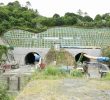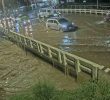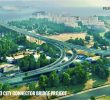
Engr Jamila Deocampo, head of the Davao Seismic Station based in the Philippine Science High School campus in Mintal. (Zea Io Ming C. Capistrano/davaotoday.com)
DAVAO CITY, Philippines – This city would host a “mirror station” of the data collected by the Philippine Institute of Volcanology and Seismology (Phivolcs), a decentralization plan of the agency operation and to protect the data should the central office be destroyed by a severe earthquake.
The “miror station”, so called because the operation of the office here would be using the stored and real-time data in the central office, would be part of the Mindanao cluster center here, said Phivolcs science specialist Engr. Jamila Deocampo, head of the Davao Seismic Station based in the Philippine Science High School campus in Mintal.
Once completed, the center will have two floors and would act as one of the mirror stations should the main Phivolcs office get affected by the strong earthquake that may emanate from the West Valley Fault.
Should the “Big One” occurs, Deocampo said they are anticipating the head office’s operation to be affected and will temporarily be incapable of monitoring earthquakes.
“If that happens, the mirror station will be Davao and Tagaytay. In case Tagaytay will be affected, Davao will be the center while the equipment in the head office is still being constructed,” she added.
As the mirror station, the center in Davao City will serve as the information center.
But Deocampo clarified that the center will have its own personnel of around five to ten people. She said some personnel will be arriving in Davao City from other offices by the end of March or early April.
Preparedness
Deocampo told Davao Today that the plan was already around before 2010.
“I could not remember the exact year, but it was before 2010,” Deocampo said.
She said the equipment is already at the building located at the Davao Seismic Station near the school gym but is undergoing renovations.
However, they are still waiting for P2 million to P3 million funding to complete the construction.
Still unpredictable
Meanwhile, Deocampo advised the public that only planning and preparedness are the best defense should an earthquake strike.
“Currently there is no country that can predict an earthquake,” she added.
“By prediction, I want to clarify that we mean we can predict the exact location, exact time and exact magnitude of an earthquake,” she said.
She said “long-term prediction” could be possible, including the prediction that an earthquake that occurred in the past can happen again in an area.
“Or we have an active fault in this area, it is possible to generate this kind of magnitude of an earthquake,” Deocampo added. However, short-term prediction, including the exact location, time and magnitude similar to reports that went viral online last week is not possible.
Deocampo stressed that residents and offices should make sure that their houses and establishments are not built on top of a fault line. She said the buffer zone should be five meters from each side of the fault.
She added that the houses and offices should also have sturdy structures and foundations.
“Prepare yourself and your family and your community . We cannot predict an earthquake, we cannot do anything to prevent an earthquake from happening,” she said.
Davao City’s active fault lines are located in Barangays Maa in Talomo district and New Carmen in Tugbok district. De Ocampo said the 4.6 magnitude quake that jolted Davao City on Thursday last week was due to the movement of the New Carmen fault. (davaotoday.com)










